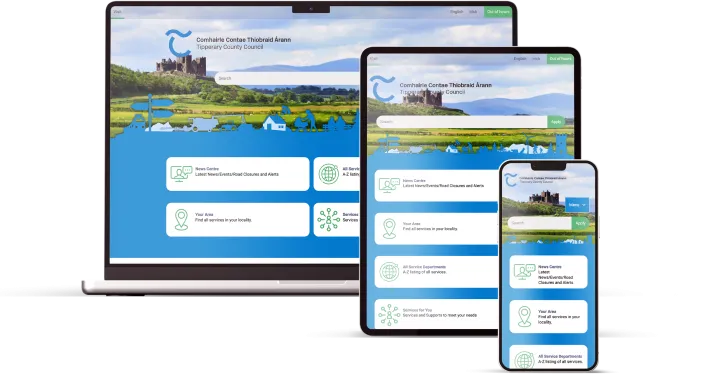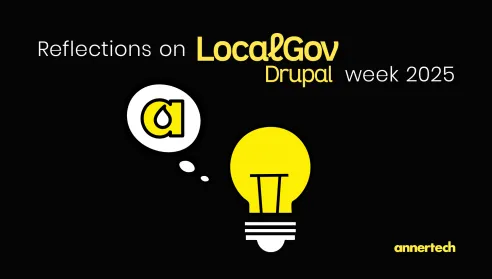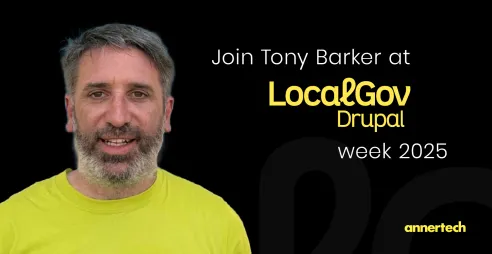How LocalGov Drupal aligns nicely with the Irish Government's 2030 ICT Strategy

The Irish Government’s Connecting Government 2030 ICT Strategy was published last year and the Build to Share initiative remains as one of its core tenets.
In this article, we will look at how the publicly owned distribution, LocalGov Drupal (LGD), is very much in keeping with the Irish Government’s philosophy of delivering a common applications approach and creating efficiencies.
What is ‘Build to Share’ and what is the Government trying to achieve?
Build to Share (B2S) is the Irish Government’s aim to rationalise disparate systems, thereby decreasing the ICT cost base and time savings.
Part of this strategy includes sharing infrastructure and application code for both internal and public-facing digital platforms. This represents a continuation of a commitment to B2S that was espoused in the 2015 strategy.
As Annertech’s Managing Director, Stella Power, commented in an Eolas magazine article: “All public bodies ultimately use similar systems to carry out core day-to-day work, whether that be internal or public facing."
She went on to say: "What B2S offers is obvious in terms of cost saving but what is more implicit is that it standardises best practice and ultimately provides a better service to citizens.”
This no more so than with local authorities. A few years ago, Limerick City and County Council shared its code base for its website with Fingal County Council, who subsequently made theirs available to Cork County Council. This freed up time and budget to focus on other innovative elements when upgrading their websites.
However, things have moved on a pace since then in terms of local authority website development and code sharing. This is where LGD comes in.

Working in concert: LocalGov Drupal and Build to Share
Three years ago, I wrote an article about an innovative code sharing initiative being developed for local government in the UK, namely the nascent LocalGov Drupal publishing distribution.
We have written extensively about LGD in the media, on our blog and more generally on our website where we outline its merits. In a nutshell it is a publicly available, free-to-use, publishing platform for local councils that is built by councils for councils.
Though its genesis was in the UK, it has grown into a collaborative community of developers and local council innovators that have developed a product specifically aimed at generic council functionality that eliminates “reinventing the wheel” and provides significant costs savings.
Another reason why LGD effectively mirrors the ethos of B2S is because it is constantly evolving with new features being added all the time.
If a council develops new functionality outside of the distribution, they can add it back to the LGD distro, thus improving it as a product – more on that later!
Other relevant things to bear in mind is that it is built with WCAG accessibility in mind, all of the user research has already been conducted and it has a defined roadmap.
To date, LGD now has 34 councils signed up to the distribution and its inadvertent chiming with the Irish Government's B2S initiative has meant that it is now gaining popularity with Irish councils.
LGD’s adoption in Ireland: Tipperary County Council
Tipperary County Council was already using Drupal CMS but wanted to redevelop its site and was intrigued about LGD and what it could achieve.
After speaking with Annertech, they decided to move to LGD and build it themselves, with our help, within four months!
Importantly, they identified a piece of functionality that is pertinent to Irish councils that had yet to be developed, namely an integration with the Irish Services Catalogue – an online catalogue which allows users to access information on services provided by local authorities all in one place.
Irish language translations were also needed in order for the council to provide essential services information in Irish.
As they had saved time and money by using LGD, Tipperary were in a position to develop this Irish council-specific functionality and donate it back to the distribution so that other Irish councils could avail of it in future.
This approach is truly in keeping with the B2S mindset and illustrates that Tipperary is adhering to the Government’s ICT Strategy.

In conclusion
There is no doubt that B2S and LGD are singing off the same hymn sheet. Both are concerned with delivering exemplary services to citizens while coalescing technical resources to save time and money.
As more Irish councils join LGD – and there are some already under development – its relevance to local government's online offering in Ireland is destined to grow and dovetail with what the central government is promoting as we further move to a digital-first world.

Want to learn more about LGD?
Why not contact us today as we have so far helped 8 councils make the jump to LocalGov Drupal.
Contact Us!

